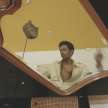
The rich history of religious and artistic beliefs of Africa is expressed and clarified through the permanence of a vast collection of antique statues.
The antique worlds of religion and arts in Africa held a very intimate relationship, wherein the artists sought to appeal to spiritual deities and strengthen divine traditions by sculpting purposeful statues.
For this reason, the sculptors in many regions of the great continent, labored side by side with the diviner-healers and predominant religious communities at the time.
Through this sacred relationship, arose the visible forms that we appreciate today, containing the invisible or spiritual wealth with which the imagination of African people navigates the surrounding world.
Statues to Welcome the Spiritual Realm
During the early years of documentation of African art, it was thought, mistakenly, that the various art forms represented divinities adored by the African people.
The reality is that the countless masks and statues originating from Africa, rather than symbolizing mythical gods or idols, constituted support elements to the spiritual world.
This signifies that artworks such as the Baule statue illustrated above served as repositories for ancestral spirits who desired to become a part of the physical human world.
Among the Baule, for instance, the statues were not kept as exclusive properties of the artisans, diviner-healers, or religious communities.
The statues formed part of a person's heritage, and in some cases, such as during the initiation of children into adulthood, specific statues had to be ordered to glorify the tradition.
Like all forms of art, the aesthetic quality of a statue was greatly appreciated by the African people, as it would often determine the willingness of spirits to call it home.
Artisans of Spiritual Beauty
The African people consulted a local diviner-healer to express their spiritual necessity. Upon receiving indications from the diviner-healer, the person would visit a sculptor to materialize the statue with specific features to fulfill their necessity.
For this purpose, the African sculptor, rather than treated as an artist, was always considered a craftsman or an artisan, as the notion of art, for the ornamental sake of art, did not exist.
The purpose of their creations was purely for religious or social glorification, functioning as instruments, rather than appealing to emotions or aesthetic contemplation.
The statues created by African artisans, despite their notorious aesthetical characteristics, are not necessarily considered beautiful representations by the people.
The beauty of these statues was rather connected to their effectiveness in evoking the spiritual world.
For this, once a statue was assembled, rituals were performed with the purpose of attracting, appealing, and enticing a spirit to inhabit it.
The focus wasn't on reproducing romanticized forms from nature or produce naturalistic images.
In the effort to evoke spirits, the sculptors would invent new figures, which would often look as unreal as possible, deliberately shunning natural proportions, according to the impulses they felt compelled by.
Among the African society, a statue was considered beautiful when it fulfilled its role of mediating between the spirit and human worlds.
Translating the Unconsciousness
Our perception of antique African art may be greatly impacted by the understanding of the drive to create a space for the invisible world to interact with the visible.
Despite the fact that the artisans would draw characteristics from elements in the visible world to help forge symbols of the transcendental, each statue was aimed at capturing specific wild energies, harnessing them, and making them favorable to the wider society.
Given the extraordinary nature of this purpose, in order to imagine how the elements of the visible world are represented in the invisible world, the African artisan would turn to his unconsciousness.
The figures realized were often derived from appearances in the artisan's dreams, or during periods of isolation in the dense forest.
About the Creator
ótomundi
antique and contemporary African art lover, from Luanda & Andalucia.
visit me at www.otomundi.com






Comments
There are no comments for this story
Be the first to respond and start the conversation.